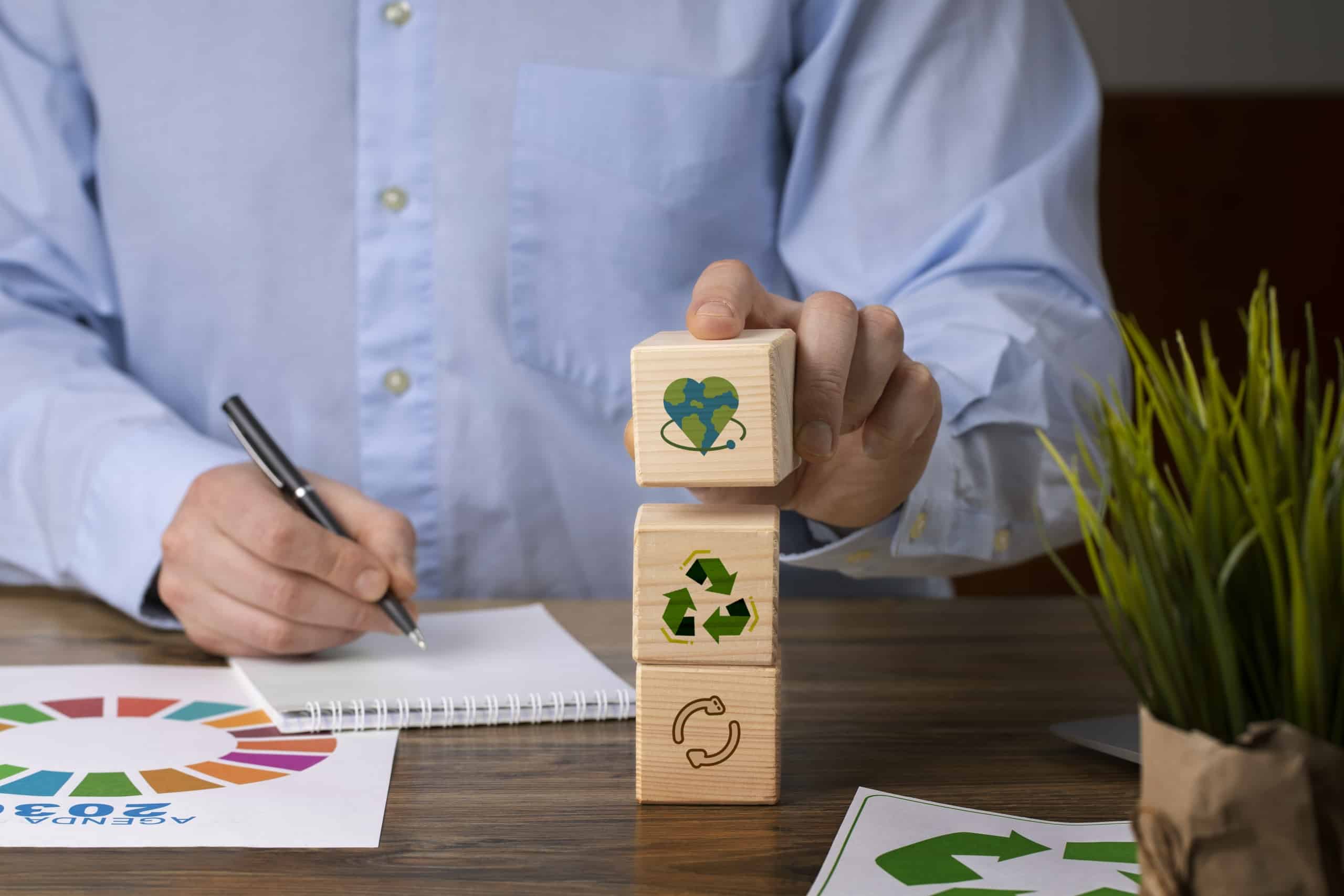1. Optimize Raw Material Usage
Waste reduction in the production of wet wipes is contingent upon the efficient utilization of basic materials. Wet wipes manufacturers can substantially reduce waste by precisely measuring and controlling the quantity of nonwoven fabric, lubricant, and other ingredients. Implementing automated dispensing and cutting systems guarantees the efficient utilization of materials, the reduction of excess, and the maintenance of consistent product quality. This results in cost savings and also reduces waste by reducing the number of resources required to produce the same volume of products.
The optimization of raw material utilization can be significantly influenced by sophisticated software solutions. These systems can analyze production data in real time, thereby identifying areas for improvement and providing insights into material consumption patterns. For instance, manufacturers can optimize their processes by monitoring the thickness and weight of the nonwoven fabric to ensure that the appropriate quantity of material is utilized for each cleanse. Furthermore, these software tools can assist in the prediction of future material requirements, thereby facilitating improved inventory management and minimizing the likelihood of overstocking or running out of essential supplies.
Involving employees in continuous improvement initiatives and providing them with training on the significance of efficient material usage can also result in substantial advantages. Workers who are cognizant of the environmental and financial consequences of pollution are considerably more inclined to implement proactive measures to mitigate it. Ultimately, a more efficient and eco-friendly manufacturing process is achieved by fostering a culture of responsibility and sustainability within the workforce, which ensures that all individuals are dedicated to optimizing raw material utilization.
2. Implement Advanced Production Technologies
In order to mitigate waste in the production of wet wipes, it is imperative to implement cutting-edge production technologies. Scrap can be substantially reduced during the cutting and folding processes by utilizing state-of-the-art apparatus furnished with precise control systems. For example, laser-cutting devices provide unparalleled precision, guaranteeing that each wipe is cut to the precise dimensions required, thereby attenuating material waste. Automation is also essential for improving production efficiency. Robots and automated systems are capable of performing repetitive tasks with exceptional precision, resulting in consistent product quality and reduced waste.
Additionally, process monitoring and control are significantly enhanced by advanced technologies. Wet wipes manufacturers can oversee each stage of the production process, from the input of unprocessed materials to the final packaging, through the incorporation of real-time data analytics and the Internet of Things (IoT). This continuous monitoring enables the immediate implementation of modifications if any inefficiencies or defects are identified, thereby preventing the occurrence of waste. For instance, if a machine begins to produce wipes that are slightly off-spec, the system can autonomously alter or suspend production to address the issue before a large quantity of defective products is produced.
Additionally, the implementation of sophisticated production technologies enhances sustainability and energy efficiency. The manufacturing process’s overall environmental footprint is reduced by the design of modern machines, which are engineered to operate with greater precision and utilize less energy. Predictive maintenance technologies can further improve operational efficiency by predicting equipment failures in advance, thereby reducing downtime and preventing the waste associated with unforeseen malfunctions. Wet wipes manufacturers can establish themselves as leaders in operational excellence and environmental stewardship by investing in these advanced technologies, which will enable them to achieve a more sustainable and cost-effective production process.
3. Adopt Lean Manufacturing Principles
In the production of wet wipes, the application of lean manufacturing principles is essential for the reduction of waste and the enhancement of efficiency. These principles are dedicated to the elimination of all forms of waste, including excess production, inactive time, superfluous motion, and defects. Wet wipes manufacturers can optimize their operations through the application of lean methodologies, which leads to substantial waste reduction and more efficient production processes. Lean manufacturing emphasizes the importance of continuous improvement, which motivates manufacturers to consistently pursue methods to improve their processes and minimize waste.
This practice of just-in-time (JIT) production is a critical component of lean manufacturing. JIT guarantees that materials and components are delivered precisely when they are required in the production process, thereby reducing the necessity for substantial inventories and minimizing the risk of material obsolescence. This method not only reduces storage costs but also reduces the likelihood of material waste as a result of deterioration or injury. Wet wipes manufacturers can reduce overproduction and associated waste by synchronizing production schedules with demand, allowing them to produce only what is required at the appropriate time.
The identification and elimination of barriers in the production process are other essential aspect of lean manufacturing. Bottlenecks can result in inefficiencies that contribute to squandered resources, increase waiting periods, and create delays. Wet wipes manufacturers can visualize the entire production process, identify wasteful areas, and implement targeted enhancements by employing techniques like value stream mapping. Furthermore, lean manufacturing fosters a culture of continuous improvement (Kaizen), in which employees of all levels are encouraged to propose and execute process improvements. This collaborative approach guarantees that waste reduction becomes a shared objective, which in turn fosters continuous enhancements in sustainability and efficiency.
Additionally, the significance of quality at the source is underscored in lean manufacturing. This principle entails the empowerment of employees to assume responsibility for their responsibilities and guarantee that quality is integrated into each stage of the production process. The waste associated with rework and rejected products can be substantially reduced by wet wipes manufacturers who prioritize the prevention of defects rather than their subsequent correction. Error-proofing (poka-yoke) and standardized work procedures are effective methods for ensuring consistency and quality, thereby reducing waste. In conclusion, the implementation of lean manufacturing principles allows moist wipes manufacturers to establish a production environment that is more cost-effective, sustainable, and efficient, thereby benefiting both the business and the environment.
4. Improve Quality Control Measures
It is imperative to improve quality control measures to minimize waste and guarantee the consistent production of high-quality wet wipes. The early detection and correction of defects is facilitated by the implementation of rigorous quality checks at various stages of the manufacturing process, thereby preventing defective products from reaching the packaging stage. This proactive approach minimizes the amount of waste produced from discarded products and reduces the necessity for rework. Wet wipes manufacturers can enhance the precision and reliability of their quality assurance processes by investing in sophisticated quality control technologies, including automated inspection systems and real-time monitoring.
By offering continuous and precise surveillance of the production line, automated inspection systems, including vision inspection technology, can substantially enhance quality control. These systems employ cameras and sensors to evaluate each cleanse for defects, including inconsistencies in moisturizer application, rips, or incorrect dimensions. The immediate detection of defects by these systems enables the implementation of rapid modifications, thereby guaranteeing that only compliant products advance in the production process. This results in increased customer satisfaction by not only reducing waste but also improving the overall grade of the product.
Another effective strategy for enhancing quality control is the implementation of statistical process control (SPC). The production process is monitored and controlled using statistical methods to ensure that it operates at its utmost efficiency through the implementation of SPC. Wet wipes manufacturers can identify trends and variations that may suggest potential quality issues by analyzing data from the production line. This data-driven approach allows manufacturers to make informed decisions and enact corrective actions before the occurrence of defects, thereby reducing waste and maintaining high-quality standards.
It is also essential to train and empower employees to actively participate in quality control. Workers become valuable contributors to waste reduction efforts when they comprehend the significance of quality and are provided with the necessary skills and resources to monitor and maintain it. The maintenance of quality at every stage of production is guaranteed by a culture that promotes open communication and continuous improvement, as well as regular training sessions on quality control techniques. Wet wipes manufacturers can establish a production environment that is more efficient and waste-conscious by encouraging a team-oriented approach to quality assurance.
Wet wipes manufacturers can considerably reduce waste and improve their overall efficiency by concentrating on optimizing raw material utilization, implementing advanced production technologies, employing lean manufacturing principles, and improving quality control measures. These strategies not only enhance the sustainability of the manufacturing process but also reduce costs and enhance product quality, thereby enabling wet wipes manufacturers to achieve long-term success in a competitive market.
5. Recycle and Reuse
The recycling and reprocessing of materials during the fabrication of damp tissues is a highly effective approach to promoting sustainability and reducing waste. One effective method is to repurpose the remnants and off-cuts of nonwoven fabric that are produced during the cutting phase. The quantity of waste that is disposed of in landfills can be reduced by collecting, processing, and reintroducing these materials into the production line to produce new tissues or other products. Wet wipes manufacturers can considerably reduce their environmental impact and raw material consumption by implementing a closed-loop system that continuously recycles refuse materials.
Wet wipes manufacturers may also prioritize the reuse and repurposing of excess moisturizers and chemicals utilized during the manufacturing process, in addition to recycling fabric remnants. For example, any surplus lotion that is not applied to the tissues can be collected and reprocessed for future use. This not only minimizes waste but also guarantees that valuable resources are not disposed of unnecessarily. The long-term benefits in terms of cost savings and waste reduction are substantial, but the implementation of systems to capture and reuse these materials necessitates investment in appropriate storage and handling facilities.
Collaborating with suppliers and other industry partners can further improve recycling and reuse initiatives. Wet wipes manufacturers can create innovative solutions for reprocessing and repurposing materials that are otherwise difficult to manage by collaborating. For example, partnerships with recycling companies can assist in the establishment of programs that collect and recycle used wet wipes and their packaging, thereby transforming them into valuable raw materials for other products. Furthermore, manufacturers may investigate the incorporation of biodegradable and recyclable materials into their products, which are more readily reprocessable after use. This collaborative approach not only enhances the sustainability of the wet wipes manufacturing process but also demonstrates a dedication to environmental stewardship, thereby increasing the company’s reputation and appeal to eco-conscious consumers.
6. Reduce Packaging Waste
In the wet wipes industry, sustainable manufacturing necessitates the reduction of packaging waste. A viable approach is to develop packaging that minimizes the utilization of materials while simultaneously guaranteeing the integrity and safety of the product. For example, the utilization of more compact packaging designs or the selection of thinner plastic companies can substantially reduce the quantity of plastic used. In addition, wet wipes manufacturers may investigate alternative packaging materials, including biodegradable or compostable alternatives, which can decompose naturally and mitigate environmental impact.
Innovative packaging solutions can also contribute to the reduction of waste. This can be achieved by substituting single-use sachets with refillable containers for moist tissues, which significantly reduces the volume of packaging waste produced. The frequency of packaging disposal can be reduced by consumers purchasing larger, bulk refill packets to replenish their containers. This method not only reduces waste but also appeals to environmentally conscious consumers who prioritize sustainable products. Additionally, packaging designs that optimize space efficiency during transportation and storage can further diminish the overall environmental impact.
Another critical measure is the implementation of recycling programs for packaging materials. By promoting the return or recycling of used packaging, it is possible to prevent these materials from being disposed of in landfills. Wet wipes manufacturers have the opportunity to establish convenient drop-off points or mail-back programs for used packaging by collaborating with retailers and recycling companies. Furthermore, the participation of consumers in recycling programs can be improved through the implementation of explicit labeling and consumer education regarding the appropriate recycling of packaging materials. Wet wipes manufacturers can substantially reduce waste and advance a circular economy by assuming responsibility for the lifecycle of their packaging.
Not only does the implementation of these strategies to mitigate packaging pollution benefit the environment, but it also correlates with consumer demand for sustainable products and improves the reputation of the brand. Wet wipes manufacturers that demonstrate a dedication to sustainability by taking proactive measures to reduce packaging waste can distinguish themselves in a competitive market. In addition, the reduction of packaging waste can result in cost savings in materials and logistics, which can enhance the overall efficiency and profitability of the manufacturing process.
7. Energy Efficiency
It is imperative to enhance energy efficiency in the production of moist tissues to reduce operational costs and minimize environmental impact. Wet wipes manufacturers can substantially reduce their energy consumption by employing energy-efficient technologies and procedures. One effective strategy is to convert to high-efficiency apparatus and equipment, which are engineered to reduce energy consumption while simultaneously maintaining or enhancing production output. For instance, the optimization of energy consumption can result in significant cost savings and decreased greenhouse gas emissions by replacing conventional motors with energy-efficient alternatives and implementing variable frequency drives (VFDs).
Energy management systems (EMS) that monitor and regulate energy consumption throughout the production process are advantageous to wet wipes manufacturers, in addition to equipment enhancements. The utilization of these systems enables manufacturers to identify areas of energy waste and make informed decisions to improve efficiency by providing real-time data on energy consumption. For example, EMS can assist in identifying wet wipes machines that are operating inefficiently or unnecessarily, thereby facilitating the timely implementation of maintenance or modifications. Wet wipes manufacturers can enhance their operational performance and energy efficiency by consistently monitoring and optimizing their energy consumption.
Facility improvements and best practices can also be implemented to increase energy efficiency. Substantial energy savings can be achieved by implementing measures such as energy-efficient lighting, appropriate insulation, and the optimization of heating, ventilation, and air conditioning (HVAC) systems. Furthermore, energy consumption can be further reduced by implementing best practices such as scheduling production during off-peak hours to capitalize on lower energy rates, training employees on energy-saving techniques, and conducting regular maintenance of equipment to ensure its efficiency. Wet wipes manufacturers can not only enhance their competitiveness by reducing their environmental footprint but also improve their sustainability credentials and lower operational costs by nurturing a culture of energy awareness and efficiency.
8. Training and Awareness
The cultivation of a culture of sustainability and efficiency within the moist wipes manufacturing industry is contingent upon the implementation of training and awareness programs. Wet wipes manufacturers can encourage their personnel to actively participate in the optimization of production processes and the reduction of waste by educating them about the significance of sustainable practices and waste reduction. The training programs should be comprehensive and cover a variety of waste management topics, such as the effective use of recycling and reuse practices, energy-saving techniques, and the proper handling and measurement of basic materials. The likelihood of employees adopting sustainable practices and contributing to the company’s overall waste reduction efforts is increased when they comprehend the consequences of their actions on the environment and the company’s financial performance.
Employees can be kept informed about the most recent technologies, regulatory requirements, and best practices in the fields of sustainability and waste management through regular training sessions and seminars. Additionally, these seminars can function as platforms for the exchange of success tales and case studies, which illustrate the successful implementation of waste reduction strategies by other companies or departments. Innovation and collaboration can be fostered by encouraging employees to participate in continuous improvement initiatives, such as Kaizen events or green teams, which can result in the development of novel and effective waste reduction methods. Wet wipes manufacturers can cultivate a motivated and engaged workforce by providing employees with opportunities to contribute ideas and take ownership of sustainability initiatives.
It is essential to raise awareness through ongoing communication and recognition programs, in addition to formal training. Internal newsletters, bulletin boards, or digital displays within the facility can be utilized to distribute consistent updates regarding sustainability objectives, advancements, and accomplishments. Recognizing and compensating employees who exhibit exceptional dedication to sustainability and waste reduction can serve to reinforce positive conduct and motivate others to emulate it. Wet wipes manufacturers can guarantee that waste reduction remains a top priority for all employees, thereby fostering continuous advancements in environmental performance and efficiency, by integrating sustainability into the company culture visibly and integrally.
9. Collaborate with Suppliers
Collaboration with suppliers is an essential approach to reducing waste and improving sustainability in the production of damp tissues. Wet wipes manufacturers can considerably reduce waste in the production process by ensuring that the materials they receive are of high quality and sustainably produced by collaborating closely with suppliers. The exchange of information and ideas on how to enhance material efficiency and reduce waste can be facilitated by establishing clear communication channels and nurturing strong relationships with suppliers. For instance, manufacturers may collaborate with suppliers to create customized raw materials that satisfy particular production specifications, thereby minimizing waste and superfluous material.
Innovative waste reduction solutions can be achieved through collaborative initiatives with suppliers. For example, suppliers may be motivated to implement recycling programs, reduce their carbon footprint, and utilize eco-friendly packaging in their operations. The quantity of packaging material used can be reduced by wet wipes manufacturers collaborating with suppliers to design packaging that is simpler to recycle or to create bulk packaging options. Moreover, wet wipes manufacturers and suppliers can collaborate to establish closed-loop systems, in which waste materials from the wet wipes manufacturing process are returned to the supplier for recycling and reuse. This approach establishes a circular economy that has mutual benefits.
It is possible to guarantee that the sustainability practices of suppliers are consistent with the wet wipes manufacturer’s objectives for waste reduction by conducting routine reviews and audits. Wet wipes manufacturers can motivate suppliers to consistently enhance their environmental performance by establishing explicit sustainability criteria and expectations. This collaborative approach may also entail cooperative research and development endeavors to identify and implement new technologies and processes that improve sustainability and reduce waste. Wet wipes manufacturers can not only reduce waste in their operations but also promote broader industry-wide advances in sustainability by nurturing a partnership-based approach. This ultimately leads to a more resilient and eco-friendly supply chain.
10. Data-Driven Decision Making
Data-driven decision-making is a potent method for enhancing efficiency and minimizing waste in the production of wet wipes. Wet wipes manufacturers can acquire valuable insights into every aspect of their production processes by utilizing advanced data analytics and real-time monitoring technologies. The exhaustive comprehension of material usage, production efficiency, and waste generation is facilitated by the collection and analysis of data from various phases of manufacturing. This comprehensive understanding allows wet wipes manufacturers to recognize trends, pinpoint inefficiencies, and make well-informed decisions that improve overall performance and minimize waste.
The capability to execute predictive maintenance is one of the primary advantages of data-driven decision-making. Wet wipes manufacturers can anticipate the likelihood of machine failure or maintenance by monitoring equipment performance and analyzing historical data. This proactive approach guarantees that production remains efficient and uninterrupted by preventing unforeseen failures and minimizing delays. In addition to extending the lifecycle of machinery, predictive maintenance minimizes the waste generated by equipment malfunctions and the necessity for emergency repairs.
Additionally, continuous improvement initiatives are bolstered by data-driven decision-making, which offers a factual foundation for identifying areas that require improvement. For example, wet wipes manufacturers can pinpoint specific locations in the production process where materials are being squandered by analyzing data on raw material usage and waste generation. This information can be subsequently employed to enhance processes, modify machine settings, or instruct employees on more efficient methods. Furthermore, data analytics can assist in the optimization of inventory management by predicting future material requirements based on production trends, thereby minimizing the risk of overstocking or stockouts. In general, wet wipes manufacturers can make precise, informed decisions that support sustainable manufacturing practices, increase efficiency, and reduce waste through data-driven decision-making.
Better energy management is also facilitated by the integration of data analytics. Wet wipes manufacturers can identify high-energy-consuming activities and implement measures to reduce energy use by perpetually monitoring energy consumption across various sections of the wet wipes manufacturing process. For example, the examination of energy data can identify opportunities to optimize process workflows, transfer energy-intensive operations to off-peak hours, or employ energy-efficient equipment to reduce energy waste. This not only reduces operational costs but also contributes to the company’s sustainability objectives by reducing the overall environmental footprint. Wet wipes manufacturers can establish themselves as industry leaders in environmental responsibility and innovation by establishing a more sustainable, cost-effective, and efficient production process through the integration of data-driven decision-making into their operations.
11. Sustainable Product Design
In the production of wet wipes, sustainable product design is a critical element in the reduction of pollution and the promotion of environmental responsibility. Wet wipes manufacturers can develop products that are not only environmentally sustainable but also functional and effective by integrating sustainability principles into the design phase. This entails the selection of materials that have a reduced environmental impact, such as biodegradable fibers or recycled materials, which can considerably reduce the debris associated with the product’s lifecycles. The wet wipes’ impact on landfills and the environment is reduced by ensuring that they decompose more easily after use, which is achieved by utilizing sustainable materials.
Designing wet tissues with sustainability in mind also entails considering the entire lifecycle of the product, from the extraction of basic materials to its disposal. Life Cycle Assessment (LCA) instruments can assist manufacturers in assessing the environmental consequences of various design decisions and identifying opportunities for enhancement. For instance, the quantity of basic materials required and the energy required for production can be reduced by selecting single-layer napkins over multi-layered ones. Furthermore, the development of wet wipes that necessitate minimal packaging or that can be sold in bulk refillable containers can further reduce the consumption of packaging materials and waste.
The development of new features that improve sustainability without sacrificing performance can be facilitated by innovation in product design. For instance, wet wipes manufacturers may develop wet wipes that are more durable and efficient, thereby enabling consumers to utilize fewer wipes per cleansing task, reducing overall consumption. In addition, the utilization of natural, non-toxic components in the formulation of the cloths can guarantee their safety for both the environment and consumers. Additionally, sustainable product design necessitates the consideration of the product’s simplicity of recycling or composting after use. Consumers can make environmentally responsible decisions by following clear labeling and disposal instructions, which can further enhance the effectiveness of sustainable design initiatives.
Wet wipes manufacturers can develop products that are consistent with the increasing consumer demand for environmentally favorable alternatives by emphasizing sustainable product design. This not only improves the company’s brand reputation and consumer loyalty but also establishes it as a leader in the industry concerning sustainability. In the final analysis, sustainable product design is a proactive strategy that accommodates consumers’ requirements for convenient and effective cleaning solutions while simultaneously addressing environmental concerns and reducing waste, thereby contributing to a healthier planet.












